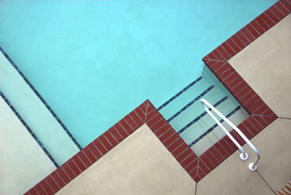Aquatic Safety Standards
The Lifesaving Society and most aquatic professionals understand that the provincial legislation governing aquatic facilities does not contemplate all of the issues that face operators on a day-to-day basis. These issues, if not addressed, may be a source of risk and contribute ultimately to a serious injury or fatality.
To minimize risk, an operator needs to understand not only what these risk-issues are, but also what is the accepted standard of care in that particular area of operation. In addition, operators often seek guidance from the Lifesaving Society when establishing safe operating practices. These standards also help to reduce risk.
The Society develops position statements and standards, which can contribute significantly to improved levels of safety in Ontario's public swimming areas. Position statements and standards may become the basis for future legislation.
:::

The Lifesaving Society Standards Committee undertakes a formalized method of developing aquatic position statements and standards. The Society collaborates provincially, nationally and internationally with agencies, affiliates and other stakeholders on the subject of developing position statements and standards on aquatic issues.
Standards
These standards are part of a series. We will add to this list as standards become available.
- Admission for Aquatic Facilities, December 2003
- Anaphylaxis, January 2024
- Breaks from Direct Supervision, June 2007
- Breastfeeding, January 2024
- Criminal Reference Checks, January 2001
- Diving Boards, January 2024
- Electrical Storms at Supervised Outdoor Aquatic Sites, June 2022
- Electrically Non-Conductive/Insulated Reaching Pole, May 2022
- Emergency Communication, January 2024
- Off-Location Trips, January 2010
- Pool Fouling, January 2024
- Rope Swing, January 2024
- Staff Training, January 2001
- Swim Meets, January 2024
- Vision for Lifeguards/Instructors, January 2004
- Within Call, January 2024